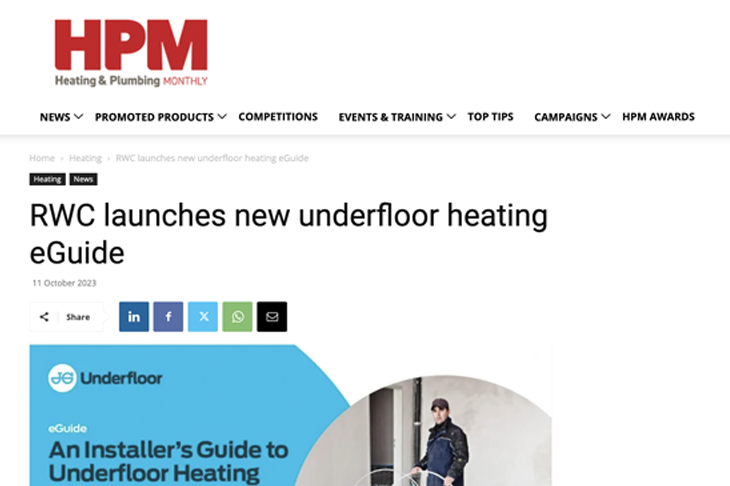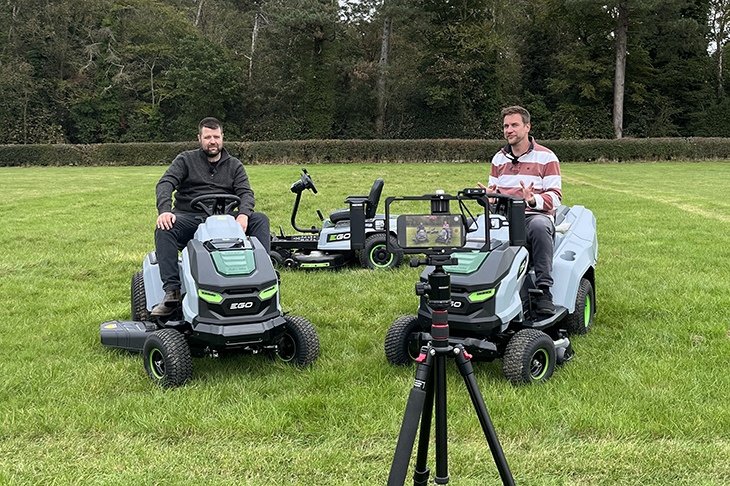- Digital Marketing
- Marketing
- PR & Content
Creating PR campaigns that cut through in construction media and beyond.
Building an effective PR campaign for the construction industry is quite a task – but it is essential to establishing your brand as a genuine expert within the industry. Over time, that expertise, and the added value that it demonstrates, can make a tangible contribution to the bottom line. Here, Adam Jones, Senior PR & Content Manager, explores the layers of a successful multi-channel PR campaign.

We’re all familiar with the phrase “content is king” and – to some extent – it’s true. Content is a crucial component in any PR campaign, equipping brands with a useful tactic to communicate with their audiences. However, content for content sake isn’t going to be the determining factor in any brand’s success – not least one that has aspirations of being a genuine industry leader.
Before pen meets paper, taking a step back and considering the broader picture is important. This means understanding your customers, their challenges and what drives success for them. It also means having an honest grasp of where your brand sits in the marketplace – especially one as complex as construction, where factors such as heritage and innovation drive customer loyalty and, ultimately, sales. Knowing where your brand can make a real difference is the key starting point for an effective PR campaign. Here, customer journey mapping exercises will help you stand in your customers’ shoes, building your familiarity with their challenges.
From there, you can begin to identify where you can make a difference through the sharing of your expertise. Here, a multi-channel approach will be the vehicle that brings your brand to your target customers. How people engage with and absorb information is very different today than it would’ve been even a decade ago. Traditional media still has an important role in the mix, but things like social media – where influencer marketing mustn’t be overlooked – now need to be a consideration in PR campaign planning. Only by getting the content mix right will you be able to reach customers in ways that encourage engagement.
But knowing what your customers want and where you can engage them is only one part of the puzzle. For your PR campaign to be successful, you need to build trust.
Establish your expertise.
Your PR campaign can’t just be about pushing products. While growing sales might be the ultimate goal, you first need to establish trust with your customers—and that comes through demonstrating your expertise.
Multi-channel content marketing is a key tool that can help brands to set themselves apart from the competition and carve out meaningful connections with customers. Content that adds value will stand out from intrusive ads to grab customers’ attention, and it will help to create – or strengthen – brand awareness and perception. By consistently adding value through content, trust is built and authority is established.

Building a construction PR campaign.
Once the foundations are in place, construction brands can begin to build their multi-channel PR campaigns. At this point, it’s important to lean on your research and knowledge of your customers to choose the right channels for your business – and the goals you’re trying to achieve. Having an account on every channel isn’t going to cut it; you need to build a presence on the channels that matter most.
Alongside customer insights, your choice of channels will also be influenced by the purpose of your multi-channel campaign. Are you trying to build brand recognition, grow share of voice, increase website visits, nurture leads, and boost the sales pipeline? Whatever your goals, they’ll inform the channels utilised throughout your campaign, with cross-channel content working together to build connections and achieve goals.
The most effective multi-channel PR campaigns will build brand awareness and engagement by consistently delivering value for customers on the channels they use most. This makes it important for brands to refine the messaging to suit each chosen channel, creating content that captures attention, drives engagement and delivers value. What that looks like will be very different on social media platforms than it will be through traditional B2B PR, but the underlying message – and the value behind it – will remain consistent.
By paying particular attention to the content on each of your chosen channels and delivering consistent value over time, brands will nurture strong connections with customers, keeping them front of mind when it comes to making a purchasing decision.
Let’s take a look at some of the key content types that can strengthen multi-channel B2B PR campaigns.
Unique digital content.
At the heart of a successful campaign is something that’s completely unique to your brand – something your customers can’t find elsewhere. This high-value content could take the form of anything from eGuides, which provide practical advice and insight, through to whitepaper and reports, which take a far deeper dive into a topic. Either way, unique research, data and insight will be key to making it stand out and delivering real value to customers.
As high-value content, brands should consider keeping eGuides, whitepapers and reports gated, requiring customers to share their name and contact information. This exchange ensures only the customers with a keen interest will engage, providing brands with new leads, while customers receive unique insights. Plus, once the content has done its job of engaging and informing customers, it can be easily broken down to fuel PR and social media opportunities, further extending its impact.
Press releases.
Contrary to the belief that press releases are outdated, they remain a valuable and effective component of any B2B PR campaign, providing a way to share exciting news with engaged audiences quickly. Packed with all the relevant information, and teases of interesting insights, they’ll serve to pique the interest of readers and bring them closer to your campaign. This approach will also help brands to maintain a consistent presence across tier-one industry publications, improving brand recognition amongst key audience groups.
The value of press releases doesn’t end there. With a little repurposing, press release content can be used to keep owned platforms updated, too. Whether that’s through updates to the latest news pages, regular newsletters or even updates on social media, creating content that enhances your exposure will keep you front of mind.

Blog posts.
Blog content can be an excellent addition to content marketing campaigns – provided they’re written with purpose. Planning blogs is key – you don’t want to double up on existing content, or create something that’s not worth reading. To contribute successfully to the broader campaign, blogs need to add their own value for readers, so keeping your fingers on the pulse of the industry is key. Activity such as keyword research will be key here, helping you to understand what people are searching for around particular topics. Armed with this information – and pairing it with genuine expertise – you can clearly define your blogs and topics, answer common questions and provide unique insights. This approach will also help you to showcase your expertise and authority.
Of course, as a key form of online content, it pays to approach blogs through a digital lens. Central to this is Google’s EEAT framework which helps the search engine to evaluate the quality and credibility of content, so employing factors that support this will be key to success. While EEAT isn’t a ranking factor, it will support your site’s credibility – so the more helpful and people-first content, the better.
Case studies.
An effective PR campaign will not just tell; it will show the true value of your products and systems. Of course, a fantastic way to do this is through case studies, where customer stories are used to demonstrate the value of your brand’s involvement in a project’s success. This content is best structured around a key challenge and how it was solved. Where possible, including customer testimonials will help this content stand out even further and enhance credibility – whether through traditional PR channels or owned platforms.
Photography – and videography – also need to be a consideration here. They do say that a picture is worth a thousand words, and with a case study, it certainly is. As well as bringing the story to life and capturing your audience’s attention, case study photography can unlock even greater potential. For example, if we’re talking about the installation of a product, being involved from the start could create opportunities to capture the full job on video, which could subsequently be used to create practical installation guides and tutorials.
Social media.
Alongside core PR tactics, social media marketing also plays a role in effective multi-channel campaigns. Organic and paid social activity will help amplify key messages and reach new audiences. Social-first content will be essential to engage individual users, which means creating content specifically for the channels you’re using.
Of course, this requires knowing your audience. Who are they, where are they, what are they interested in, what are their values and typical behaviour? This understanding will help you create content that works for them, while an awareness of your chosen social platforms will help you leverage each one’s specific strengths. Together, you’ll be able to create an effective social media strategy that incorporates both paid and organic activity to strengthen your overarching multi-channel campaign.

Influencer marketing.
It’s easy to associate influencer marketing with the latest B2C brands – but influencers can be just as effective for B2B brands. In the construction industry, for example, many influencers have built solid communities – and they span every level, from apprentices to leaders. Naturally, you’ll need to be careful in your selection process, ensuring influencers’ values mirror those of your brand, as this will ultimately contribute towards their credibility and define your combined reputation.
To get started with influencers, think about what they can achieve for your brand and who they can connect you with. By engaging with nano and micro-influencers, you can tap into established communities and expose your brand’s more human, down-to-earth side.
SEO.
Last but not least, SEO is an integral part of any PR campaign. With such a wide variety of outreach content across various channels, on-site optimisation must be activated with your customers (and Google) in mind. They both respectably arrive at your website to find a simple, intuitive, and informative website that drives action.
By balancing each content strand and activating the right content across the proper channels, brands can build long-lasting multichannel campaigns to sustain current customers and attract new ones.
Let’s talk about your multichannel PR strategy.
